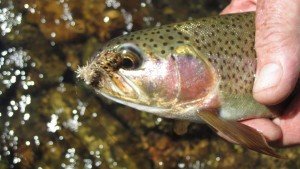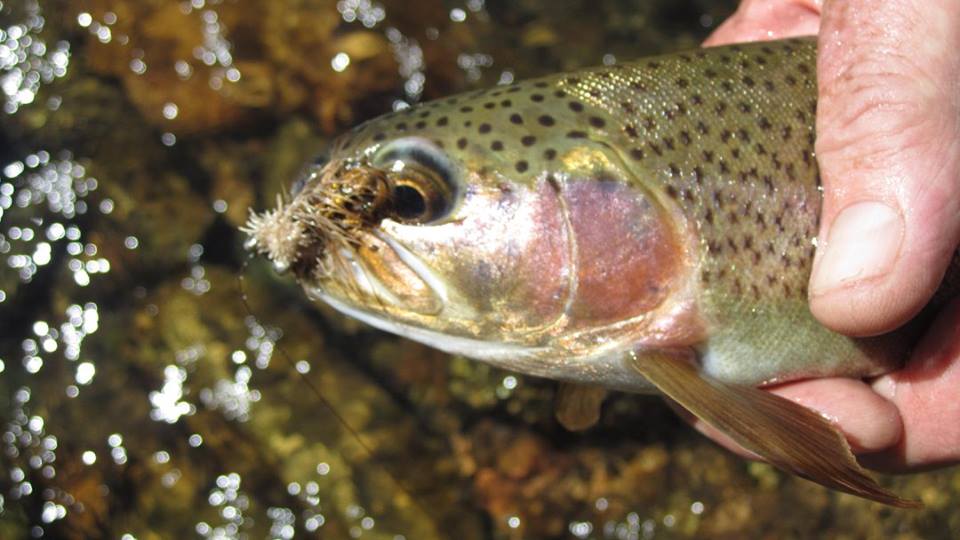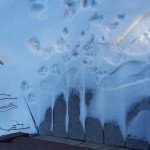In Minnesota, it’s so easy. You walk into the local bait shop, buy a dozen fatheads and whoever is behind the counter tells you where the fish are biting. Whether you chose to believe or follow the advice you just purchased (along with the dozen chubs) is up to you.
It’s different in Montana. Out there, they have fly shops. Inside those places, the mere mention of bait or even Rapalas is verboten. Fly-fishing is the name of the game. Call it institutionalized snobbery. If you want fly shop staffers to give you the dope on the local fishing hole, you’ve gotta buy some flies.

This isn’t hard to do. Every shop has thousands of flies for sale. Big ones. Teeny ones. Pretty ones. Drab ones. You name and they’ve got it. So why, in my roaming across the Big Sky Country, did I find it so difficult to buy flies that I thought would catch fish?
At fly shops from West Yellowstone to Rock Creek, I sought the advice of whoever was behind the counter, asking which of these wonderful, colorful fly patterns would help me catch fish. They were more than happy to help me select as many as I wanted and then give me some vague fishing advice. The flies were dumped into one of my many fly boxes and I invariably headed somewhere other than where they told me to go. Call me a contrarian (I’ve been called worse), I had no reason to doubt the advice. But I did doubt the flies. I had no faith they’d catch fish.
I started fly-fishing at age 12. The first fish I caught, a brook trout, was on a fly I tied myself. Nearly all of the fish I’ve caught while fly-fishing since then were taken with my own flies. Over the years, I’ve developed fly patterns that work for me. This is not to say I am an expert fly tier. A bonafide expert would likely (and justly) label my efforts as “crude.”
That’s okay, because my flies catch fish, which is, after all, the point of fishing. My approach to making flies is that form follows function. A fly is intended to mimic a living creature and thus trick a fish into striking it as food. But it also must perform in the water as intended.
Here’s a case in point. One morning I fished Montana’s Rock Creek with a grasshopper pattern I’d purchased at a fly shop. I bought the fly because I didn’t have any grasshoppers of my own design (more on that later). The fly looked like a grasshopper and had a long, yellow foam body that made it float high and easy to see. The trout seemed to like it, too. I had three or four explosive strikes…and missed all of them.
Eventually it dawned on me why that was happening. In the past, I’d had the same trouble hooking fish with foam-bodied mayfly imitations while fishing the July Hex hatch back home. The snout of a striking trout actually pushes a stiff, foam-bodied fly away. I wasn’t missing the strikes. The trout were missing the fly.
I hadn’t tied any flies, grasshoppers or otherwise, for the Montana trip. In fact, it had been several years since I tied flies at all. When I moved out of my home office, where my desk did double duty as a tying table, my fly-tying material was packed into boxes and put away. I hadn’t found time to get back to it.
Last summer, while fly fishing around home and in Montana; it became woefully apparent that my fly boxes needed to be resupplied. So last weekend I dug my fly tying materials out of storage, set up my vice and started to tie, beginning with my crude version of the Muddler Minnow. This famous fly originated in the Nipigon River country north of Lake Superior, where creator Don Gapen guided anglers seeking giant brook trout. Made primarily of deer hair and turkey feathers, the Muddler was intended to imitate the bottom-dwelling sculpin minnow a favored trout food. Fly-fishers brought the pattern to Montana, where it was used to imitate everything from sculpins to grasshoppers. Over the years, the fly has been tied in endless variations and it remains a go-to pattern for trout anglers.
My Muddler is a small, stripped down version of the original intended to sink quickly and have lots of flash to attract trout in quick-moving water. It is simply some cooper wire wrapped around the hook shank, an underwing made from a tinsel-Mylar material called Flashabou. I tie in a tiny clump of deer hair above the Flashabou to give the fly shape. The finished fly is about an inch-and-a-half long. It is easy to tie, performs the way I want it to and is durable enough to catch several fish.
Durability can be an issue with commercial tied flies, which are often imported from countries with cheap labor. Sometimes a fly will unravel after you catch a fish with it. Tying for myself, I take the time to make a few extra wraps with the tying thread to ensure this doesn’t happen. A few of my crude patterns actually look more natural after they’ve been chewed on by a fish or two.
Some say it’s more satisfying to catch a fish on a fly you tied. On the Missouri River near Helena last summer, I was stymied by the big trout purported to live there. After a couple of hours fishing without a strike on store-bought flies, I tried a heavily weighted fly on my own design. Immediately, I had action. After missing a couple of soft taps, I had a savage strike and saw a boil on the river’s surface where a sizeable trout surged on the end of my line. And yes, it was satisfying.
Throughout the course of the winter, I’ll pick away at restocking my favorite flies. They won’t be pretty, but they’ll have the sparkle, flash and natural movement that attracts hungry fish. Maybe they’re no more effective than the flies you tie or the ones you buy at your favorite fly shop. But all that really matters is they work for me.





